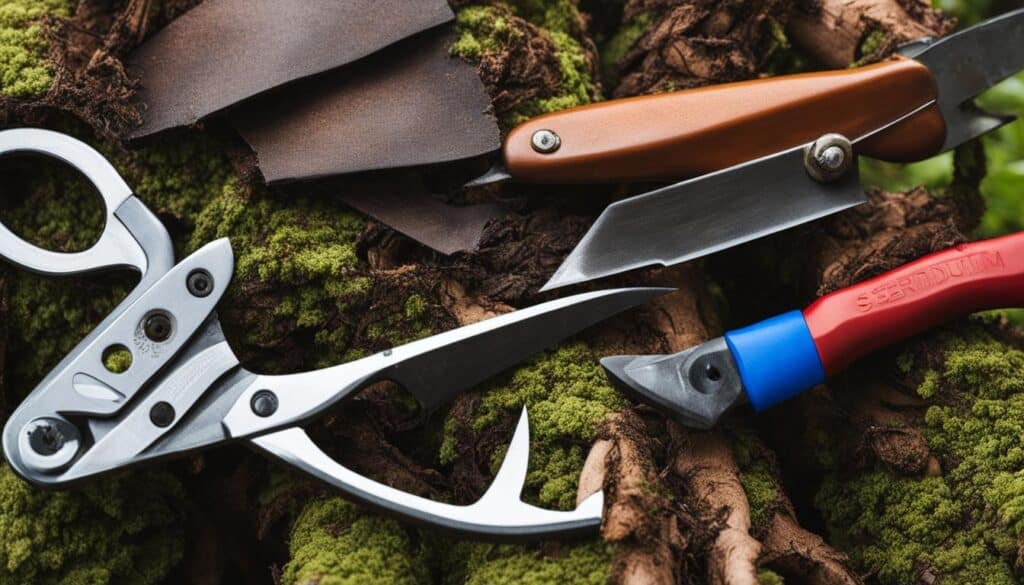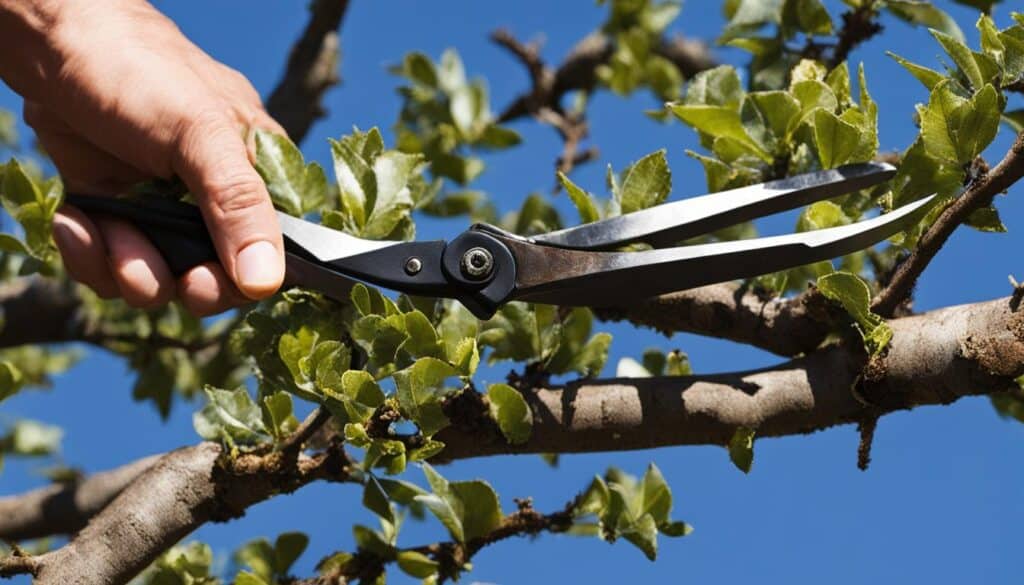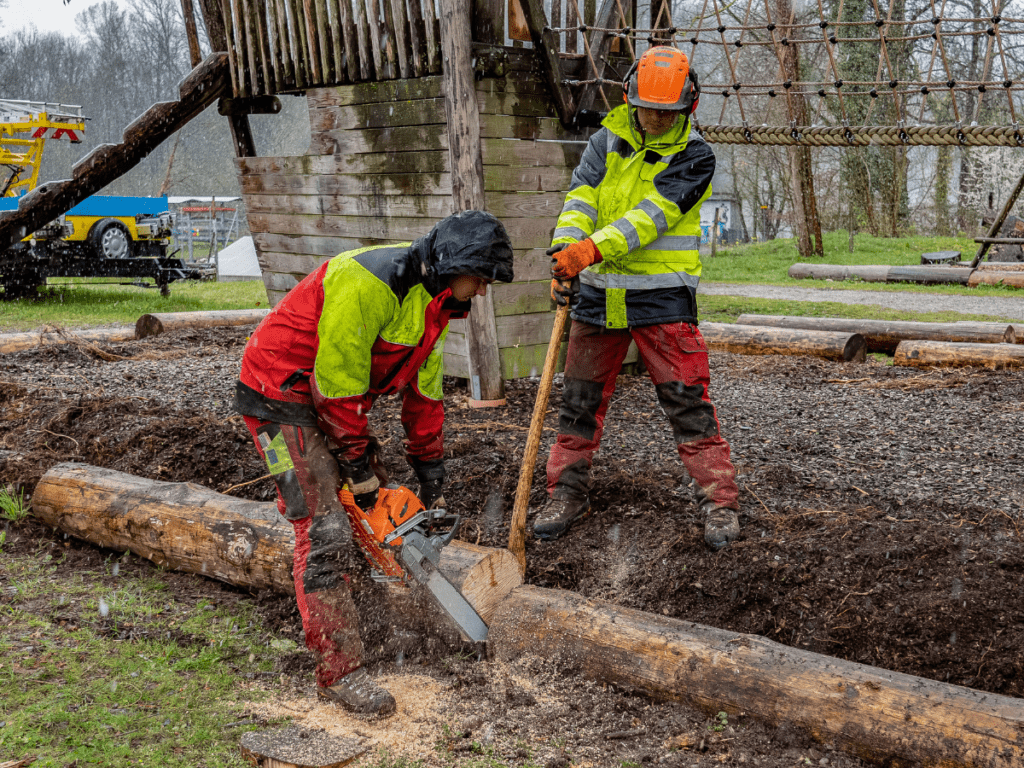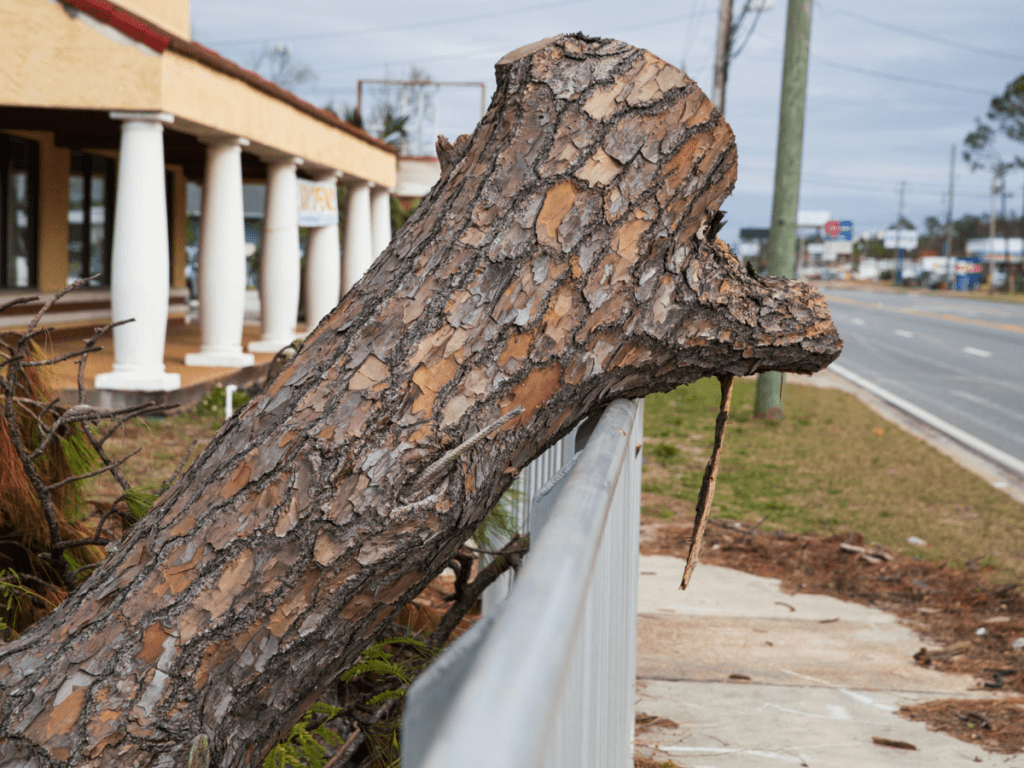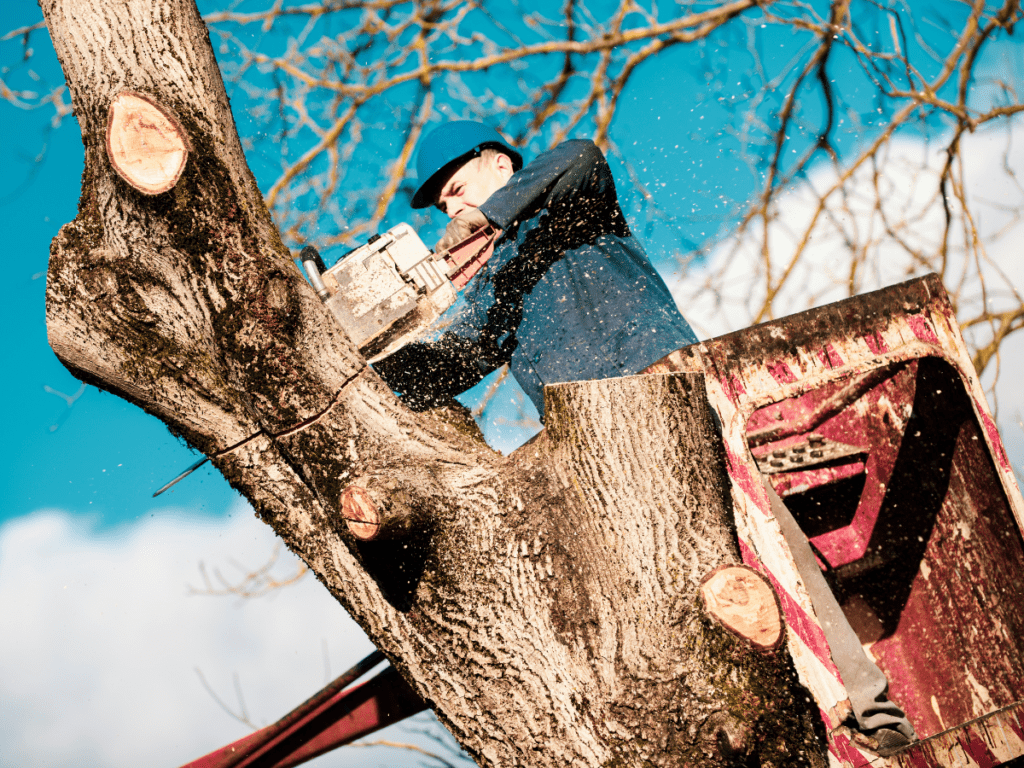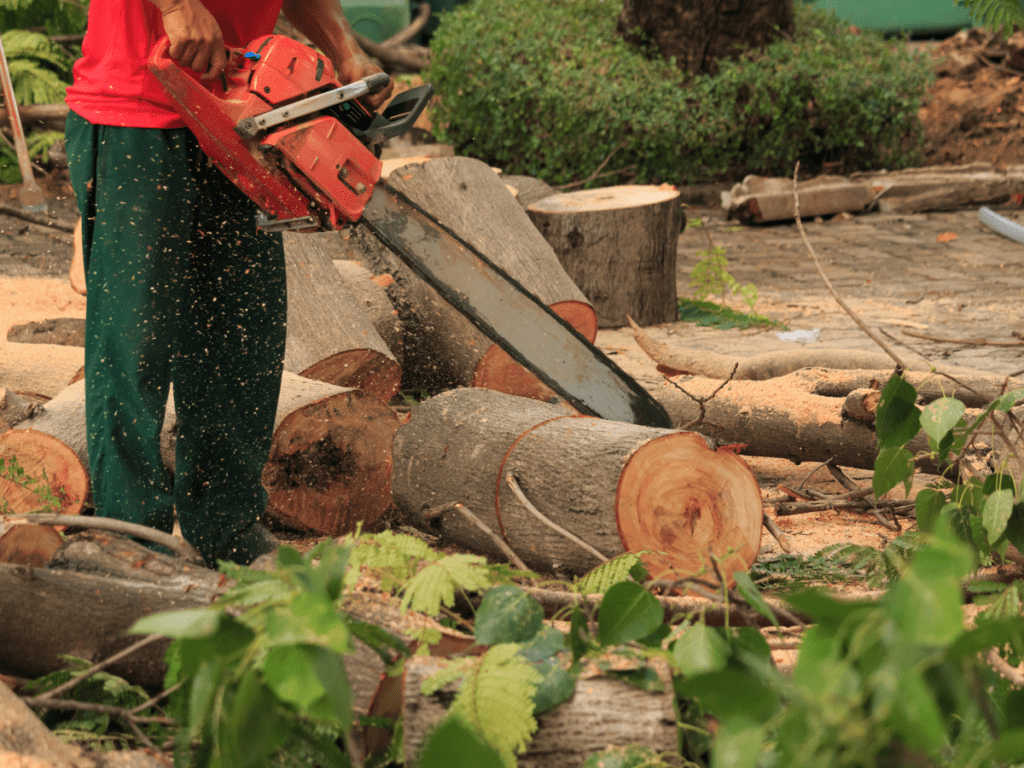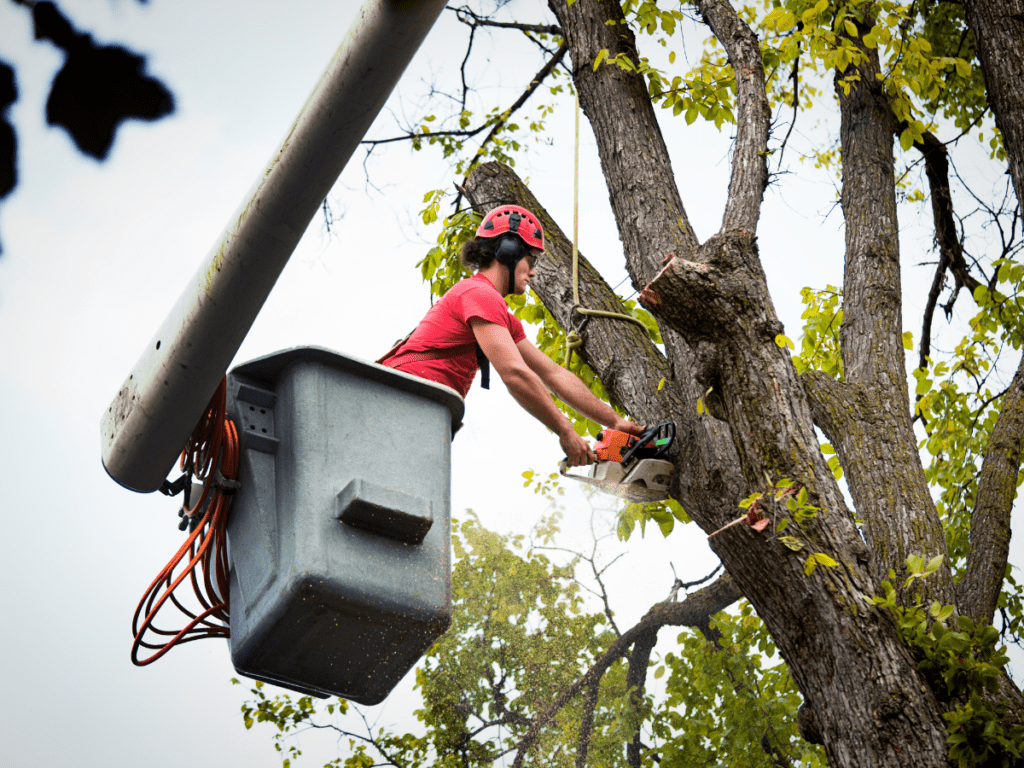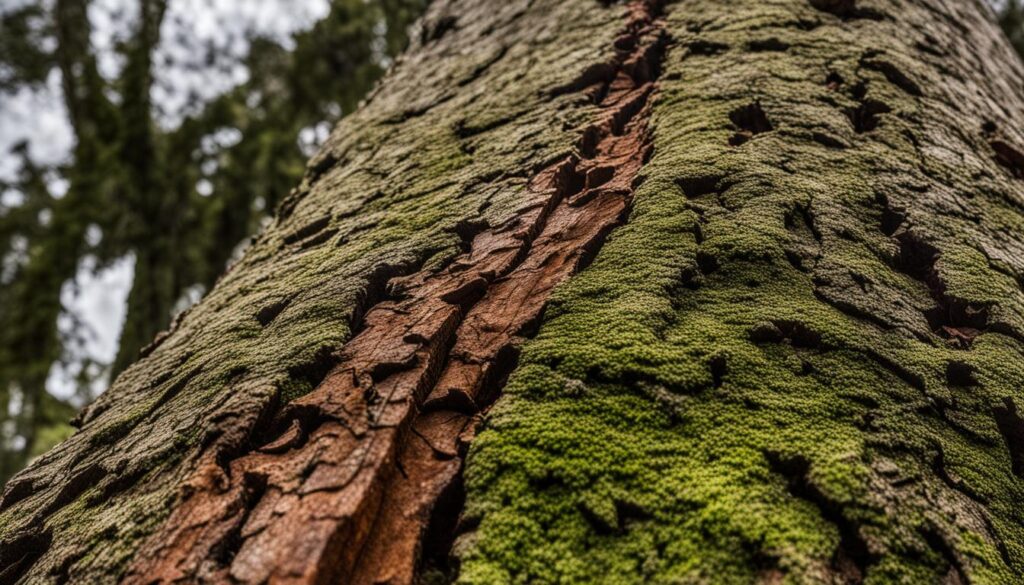
Key Takeaways:
- Seiridium canker is a serious plant disease that affects cypress trees.
- This fungal infection is caused by different species of the Seiridium fungus.
- The disease leads to twig and plant mortality, flagging of branches, and the appearance of reddish cankers.
- Stressors like drought, winter desiccation, and fertility issues can make trees more susceptible.
- While there is no effective fungicide, cultural practices like pruning infected branches and alleviating stress can help manage the disease.
What Causes Seiridium Canker?
Seiridium canker is a tree disease caused by three different species of the fungal pathogen Seiridium: S. cardinale, S. cupressi, and S. unicorne. The most common species in the Mid-Atlantic United States, including West Virginia and surrounding areas, is S. cardinale. While the disease can infect various tree genera, it primarily affects cultivated Leyland cypress trees.
It is important to note that Leyland cypress is particularly susceptible to Seiridium canker in this region. Other tree species may also be affected, but Leyland cypress is the most commonly impacted. Therefore, tree owners should be especially vigilant in maintaining the health of their Leyland cypress trees and implementing appropriate disease management strategies.
| Fungal Pathogen Species | Tree Genera Affected |
|---|---|
| S. cardinale | Leyland cypress (most common in Mid-Atlantic United States) |
| S. cupressi | Various tree genera |
| S. unicorne | Various tree genera |
Understanding the specific fungal pathogen species and their impact on different tree genera can help tree owners and arborists devise effective strategies for preventing and managing Seiridium canker.
What Causes Seiridium Canker?
Seiridium canker is primarily caused by three different species of the fungal pathogen Seiridium: S. cardinale, S. cupressi, and S. unicorne. In the Mid-Atlantic United States, including West Virginia and surrounding areas, S. cardinale is the most common species that affects Leyland cypress trees. Other tree genera can also be infected by different Seiridium species. However, Leyland cypress is highly susceptible to Seiridium canker in this region.
It is crucial to understand the specific fungal pathogen species and their impact on different tree genera to effectively manage and prevent Seiridium canker. By identifying and recognizing the causes of this disease, tree owners and arborists can implement targeted strategies to protect the health and vitality of their trees.
| Fungal Pathogen Species | Tree Genera Affected |
|---|---|
| S. cardinale | Leyland cypress (most common in Mid-Atlantic United States) |
| S. cupressi | Various tree genera |
| S. unicorne | Various tree genera |
By being aware of the specific fungal species causing Seiridium canker and their impact on different trees, tree owners can take appropriate preventive measures and manage the disease effectively.
Recognizing Seiridium Canker Symptoms
When it comes to identifying Seiridium canker, there are several key symptoms to look out for. The most noticeable sign is the flagging of branches, where you’ll see yellow to reddish-brown branches that stand out among the healthy foliage. Upon closer inspection, you may notice slightly sunken, reddish cankers on the branches and twigs with resin exudation. It’s important to note that these cankers are typically located close to the trunk but can also be found on branches without flagging symptoms. Additionally, pycnidia, which are black, pustule-like structures, may appear on the bark.
The presence of Seiridium canker can lead to twig and plant mortality, ultimately resulting in the death of the entire tree if left untreated. Therefore, it’s crucial to be vigilant and recognize these symptoms early on to take appropriate action.
“The most visible symptom of Seiridium canker is the flagging of branches, where yellow to reddish-brown branches appear.”
By being able to spot these symptoms, tree owners and arborists can take the necessary steps to manage and mitigate the impact of Seiridium canker on cypress trees. Prompt action, such as pruning infected branches, can help eradicate the source of infection and prevent further spread of the disease. Remember to sterilize pruning tools with bleach or alcohol after each cut to avoid spreading the fungi. Additionally, alleviating stress on the trees by protecting them from desiccation and providing proper irrigation can aid in managing the disease and promoting tree health.
Overall, recognizing the symptoms of Seiridium canker is crucial for effectively managing the disease and preserving the health of cypress trees. By staying vigilant and taking proactive measures, tree owners can help ensure the longevity of their beloved trees.

Factors Affecting Seiridium Canker
Several factors can contribute to the development and severity of Seiridium canker in cypress trees. These include various stresses that weaken the trees and make them more susceptible to the disease. The primary stresses associated with Seiridium canker are drought, winter desiccation, and fertility issues.
Drought can cause significant stress on trees, leading to dryness within the tree and making it difficult for them to absorb water. Winter desiccation, especially during prolonged sub-freezing temperatures, can exacerbate this condition when transpiration is high. Fertility issues, such as nutrient deficiencies or imbalances, can also weaken the overall health of the trees, making them more susceptible to disease.
To prevent and manage Seiridium canker, it is important to address these stresses. Providing proper irrigation and ensuring adequate water availability can help alleviate drought stress. Protecting trees from winter desiccation through protective coverings or windbreaks can also be beneficial. Additionally, maintaining proper soil fertility and addressing any nutrient deficiencies can help improve tree health and resilience.
| Factors Affecting Seiridium Canker | Impact on Tree Health |
|---|---|
| Drought | Increases tree stress, reduces water uptake, and weakens defenses against pathogens |
| Winter Desiccation | Causes dryness within the tree, making it difficult to absorb water and nutrients |
| Fertility Issues | Imbalances or deficiencies weaken tree health and make them more susceptible to infections |
By addressing these factors and implementing proper tree care practices, such as adequate irrigation and soil fertility management, tree owners can significantly reduce the risk of Seiridium canker and promote healthier, more resilient cypress trees.
Managing Seiridium Canker
When it comes to managing Seiridium canker, cultural practices play a crucial role. By implementing the right strategies, tree owners can help alleviate stress, eradicate the source of infection, and effectively control the disease. Here are some key practices to consider:
- Pruning infected branches: Prune infected branches about 3 to 4 inches below the cankered area and destroy them. This helps eliminate the source of infection and prevent further spread. It is important to sterilize pruning tools with bleach or alcohol after each cut to prevent the fungus from spreading to healthy parts of the tree.
- Alleviating desiccation: Protecting trees from drought and winter desiccation is essential. By providing proper irrigation and ensuring adequate moisture levels, you can help alleviate stress and minimize the risk of Seiridium canker infection.
- Avoiding fungicides: Currently, there are no effective fungicides available for controlling Seiridium canker. However, research has shown some suppression of fungal growth with certain fungicides, so stay updated on any new developments in the field.
By following these cultural practices, tree owners can effectively manage Seiridium canker and promote the health and longevity of their trees. It is important to note that prevention is key, as there is no guaranteed cure once a tree is infected. Therefore, implementing these practices as part of regular tree maintenance is crucial for maintaining tree health and preventing the spread of this destructive disease.
Table: Comparative Analysis of Different Management Strategies
| Strategy | Effectiveness | Advantages | Disadvantages |
|---|---|---|---|
| Pruning infected branches | High | – Eradicates source of infection – Prevents spread of disease |
– Requires careful sterilization of tools – Can be labor-intensive |
| Alleviating desiccation | Moderate | – Reduces stress on trees – Improves overall tree health |
– Requires consistent irrigation – May not completely eliminate risk of infection |
| Avoiding fungicides | Low | – Eco-friendly approach – Limits chemical use |
– No guaranteed control of disease – Limited options for treatment |
Seiridium Canker in Central Texas
Seiridium canker is becoming increasingly prevalent in Central Texas, affecting various cypress species such as Leyland cypress, Italian cypress, and Arizona cypress. Among these, Italian cypress is particularly susceptible due to its widespread use in the landscape. The disease tends to occur more frequently in trees planted in poorly drained soil or soil lacking sufficient organic content.
Proper drainage is essential in preventing the occurrence of Seiridium canker. Before planting cypress trees, it is important to perform a drainage test to ensure good internal and surface drainage. Avoiding clay soils and selecting the proper soil type for each species can significantly reduce the risk of infection. Additionally, maintaining well-drained soil with high organic content can help create an environment less conducive to the development of Seiridium canker.
Furthermore, understanding the ideal growing conditions for each cypress species is vital in preventing the disease. Cypress trees thrive in full sun, so it is important to ensure they are planted in areas receiving adequate sunlight. Proper spacing between trees is crucial to promote air circulation, reducing the chances of infection spreading from one tree to another. Planting hedgerows of cypress trees should be avoided as it can create a favorable environment for disease transmission.
| Cypress Species | Characteristics |
|---|---|
| Leyland cypress (Cupressus x leylandii) | Commonly used for screening and hedges |
| Italian cypress (Cupressus sempervirens) | Tall, slender evergreen tree often used for landscaping |
| Arizona cypress (Cupressus arizonica) | Native to the southwestern United States, known for its drought tolerance |
By taking these preventive measures, such as ensuring proper drainage, selecting suitable soil type, and understanding the ideal growing conditions for each species, tree owners can significantly reduce the incidence of Seiridium canker in Central Texas.
Recognizing Seiridium Canker Symptoms in Central Texas
Seiridium canker in Central Texas can be identified through several distinct symptoms. One of the first signs is yellowing foliage, which may initially be mistaken for normal seasonal changes. However, as the disease progresses, random dead branches, often referred to as flags, become more apparent. These dead branches can be a cause for concern, as they indicate the presence of the fungal infection.
Another notable symptom of Seiridium canker is the presence of sunken lesions on the stems and trunk of affected trees. These lesions are typically dark in color and can be accompanied by resin flows on the bark. It is important to note that Seiridium canker can also infect other tree species in addition to Leyland cypress, such as juniper and arborvitae.
Seiridium canker in Central Texas is characterized by yellowing foliage, random dead branches, sunken lesions on stems and trunk, resin flows, and can affect juniper and arborvitae as well.
Recognizing these symptoms can help tree owners take the necessary steps to manage and control the disease. Early detection is key, as it allows for prompt pruning and removal of infected branches, preventing further spread of the fungus and reducing the risk of tree mortality.
Note: The image above provides a visual representation of Seiridium canker symptoms in Central Texas trees.
Preventing Seiridium Canker in Cypress Trees
When it comes to preventing Seiridium canker in cypress trees, there are several key factors to consider. Proper internal and surface drainage is essential for maintaining tree health. Before planting, perform a drainage test to ensure good internal drainage. It is also important to avoid planting cypress trees in clay soils, as they can hinder water movement and increase the risk of infection. Choosing the right soil type, such as well-drained soil with high organic content, can help prevent Seiridium canker.
Another important aspect of prevention is mulching. When mulching around cypress trees, be careful not to let the mulch touch the trunk. This can create a moist environment that favors fungal growth. Instead, maintain a gap between the mulch and the trunk to promote airflow and reduce the risk of infection.
Cypress trees thrive in full sun, so it is important to plant them in an area that receives ample sunlight. Additionally, proper spacing between trees is crucial for air circulation. Avoid planting cypress trees in hedgerows, as close proximity can facilitate the spread of disease from one tree to another.
| Prevention Tips | Importance |
|---|---|
| Internal drainage | Ensures water flows properly within the tree |
| Surface drainage | Prevents water from pooling around the tree |
| Proper soil type | Aids in water movement and tree health |
| Mulching | Prevents moisture buildup around the trunk |
| Full sun | Provides optimal growing conditions for cypress trees |
| Spacing | Allows for proper air circulation between trees |
| Hedgerows | Avoid planting cypress trees in close proximity |
In terms of irrigation, it is important to provide consistent and deep watering, especially during periods of summer heat and wind. This will help maintain tree health and reduce stress, making them less susceptible to Seiridium canker. Additionally, it is advisable to avoid using herbicides around the base of the tree, as they can weaken the tree’s natural defenses against infection.
By implementing these preventive measures, such as ensuring proper drainage, mulching correctly, providing adequate sunlight and spacing, and practicing appropriate irrigation, tree owners can significantly reduce the risk of Seiridium canker in their cypress trees. Remember, prevention is key to maintaining the health and longevity of these beautiful trees.
Pruning and Disease Management
When it comes to managing Seiridium canker, pruning plays a crucial role in preventing the spread of the disease. However, it’s important to follow proper practices to ensure the effectiveness of pruning. Firstly, always clean your pruning tools with a bleach solution or alcohol solution between cuts to prevent the fungus from spreading to healthy branches or trees. This simple step can significantly reduce the risk of further infections.
When pruning, focus on removing dead and dying branches, including the area with the canker and a few inches beyond. By cutting off these infected parts, you minimize the chances of the disease spreading to other parts of the tree. If a tree is heavily infected with Seiridium canker, it may be necessary to completely remove the tree to prevent transmission to surrounding trees.
Timing is also crucial when it comes to pruning. It’s best to avoid pruning before, during, and after rain periods. Rain can facilitate the spread of the disease, so wait for dry weather conditions to ensure minimal risk. By following these pruning guidelines, you can effectively manage Seiridium canker and protect the health of your trees.
The Importance of Proper Pruning:
“Pruning infected branches and disposing of them properly is key to managing Seiridium canker and preventing its spread to healthy trees.” – Arborist
Table: Recommended Pruning Practices for Seiridium Canker
| Pruning Step | Recommendation |
|---|---|
| Clean Pruning Tools | Use a bleach solution or alcohol solution to sterilize tools between cuts. |
| Remove Infected Branches | Cut about 3 to 4 inches below the cankered area, including a few inches beyond. |
| Avoid Pruning During Rain | Wait for dry weather conditions to minimize the risk of disease spread. |
| Consider Complete Tree Removal | If a tree is heavily infected, removing the entire tree may be necessary to prevent further transmission. |
Conclusion
In conclusion, Seiridium canker is a significant tree disease that affects various cypress species, particularly Leyland cypress. Understanding the symptoms, causes, and management strategies is crucial for effective tree care and disease prevention.
While there is currently no effective fungicide available, cultural practices play a vital role in managing Seiridium canker. Pruning infected branches, implementing stress alleviation techniques, and providing proper irrigation can help control the disease and maintain tree health.
It is important to remember that prevention is key. By ensuring proper soil type, drainage, and spacing, and avoiding herbicide use, tree owners can reduce the risk of Seiridium canker. Additionally, practicing correct pruning techniques, including sterilizing tools between cuts, can help prevent the spread of the fungus.
As ongoing research continues to explore more effective control methods, staying informed and implementing these preventive measures will go a long way in preserving the health and longevity of cypress trees. Together, we can protect our trees and create a thriving environment for future generations.
FAQ
What is Seiridium canker?
Seiridium canker, also known as Cypress canker, is a serious disease that affects Leyland cypress trees. It is caused by three different species of the fungal pathogen Seiridium.
What are the symptoms of Seiridium canker?
The most visible symptom of Seiridium canker is the flagging of branches, where yellow to reddish-brown branches appear. Closer examination reveals slightly sunken, reddish cankers with profusely exuding resin. Fruiting bodies known as pycnidia may also be present.
What causes Seiridium canker?
Seiridium canker is caused by three different species of the fungal pathogen Seiridium, with S. cardinale being the most common in certain areas. Leyland cypress trees in the Mid-Atlantic United States are most affected.
What factors can affect the occurrence of Seiridium canker?
Stresses such as drought, winter desiccation, and fertility issues can weaken trees and make them more susceptible to Seiridium canker.
How can I manage Seiridium canker?
Cultural practices such as pruning infected branches and alleviating stress can help manage Seiridium canker. Currently, there is no effective fungicide for controlling this disease.
What should I know about Seiridium canker in Central Texas?
Seiridium canker is becoming more common in Central Texas, affecting Leyland cypress, Italian cypress, and Arizona cypress. Italian Cypress is particularly susceptible due to its prevalence in the landscape.
How can I prevent Seiridium canker in cypress trees?
Preventing Seiridium canker requires ensuring good internal and surface drainage, avoiding clay soils, and planting trees at the proper depth. Providing proper spacing, full sun, and appropriate irrigation techniques are also important.
What should I know about pruning and disease management for Seiridium canker?
Pruning infected branches and properly sterilizing pruning tools are essential for disease management. Pruning should be avoided before, during, and after rain to minimize the risk of spreading the disease.


